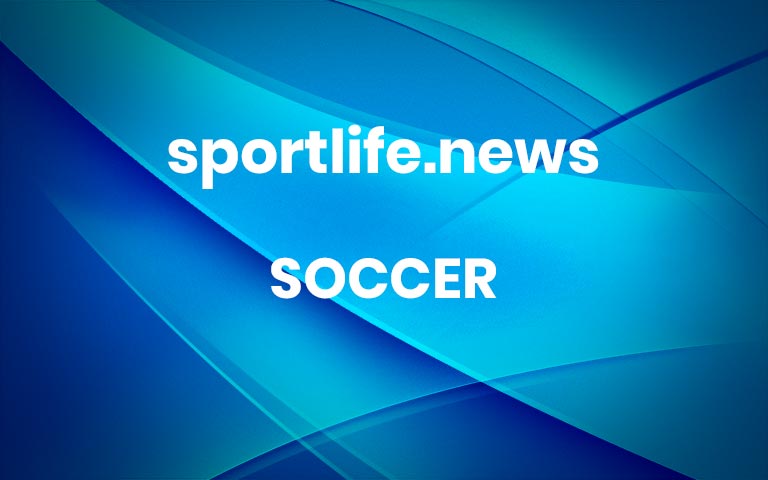Fabrizio Romano has turned rumors into an industry. But is he an observer of soccer’s multibillion-dollar transfer market, or a participant in it?The quickest way to capture the extent of the influence wielded by Fabrizio Romano, a 28-year-old Italian journalist with a five o’clock shadow and an overworked iPhone, is to boil it down into a list of easily digested numbers.Currently, Romano has 6.5 million followers on Twitter, two and a half times as many as, say, Inter Milan, the team that featured in Romano’s breakthrough moment, or Bruno Fernandes, the Manchester United star who inadvertently made Romano a global phenomenon.He has 5.6 million more on Instagram, and a further 4.5 million devotees on Facebook. There are also 692,000 subscribers on YouTube and 450,000 on Twitch, the video streaming platform.Or there are at the moment, anyway. Chances are that in the gap between the writing of that paragraph and your reading it, Romano’s figures will have ticked inexorably skyward. It is January, after all, one of the biannual boom times for a journalist covering soccer’s frenetic, multibillion-dollar transfer market. Every day, Romano’s accounts will draw another few hundred fans, another few thousand even, all desperately seeking news of the players their team is or is not signing.Yet even as these social media metrics provide an immediately comprehensible, faintly intimidating snapshot of the breadth of Romano’s popularity — self-professed insiders covering the N.B.A. and the N.F.L. could make similar claims — they do not tell us much about quite how deep his impact runs.Last month, the Spanish forward Ferran Torres posted a video of himself on Twitter doing light physical work at the training facility of his hometown club, Valencia. Torres had spent Christmas in a gentle form of limbo, waiting for his former club, Manchester City, to agree to sell him to Barcelona.By Dec. 26, things had moved sufficiently that Torres wanted to let his followers know a move was imminent. “Getting ready at home … Valencia,” he wrote in a message posted alongside the video. And then, on a new line, a single phrase: “Here We Go!”Those three words were intended as the digital transfer market’s equivalent to white smoke billowing from a chimney. They have come to mean that a deal is not just close, but completed. And they are indisputably Romano’s: They are his seal of approval, his calling card, what he refers to with just a hint of regret as his catchphrase.That, more than the numbers of followers Romano has accrued, is the best gauge of his influence. Increasingly, to players, as well as fans, a transfer has not happened until it bears Romano’s imprimatur. (“Here We Go” is, in some cases, now used as a noun: Correspondents now regularly ask Romano if he is in a position to “give the here we go.”)Romano in his home office in Milan, where he records some of his TV and podcast appearances.Alessandro Grassani for The New York TimesHis power is now so great that he has, not entirely intentionally, made the leap from being merely a reporter covering soccer’s transfer market to something closer to a force within it. And in doing so, he has blurred the line between journalist and influencer, observer and participant.The ScoopThe call that made Romano’s career, in his telling, came entirely out of the blue. He had started writing about soccer as a teenager in his hometown, Naples, composing stories and firing them off, free of charge, to a variety of fairly niche Italian soccer websites in the hope they might publish them.He does not quite know how an aspiring Italian agent in Barcelona got hold of his name, or his phone number. “He was working at La Masia” — the famed Barcelona academy — “and he wanted to become an agent,” Romano said in an interview last month. “He was hoping to convince two young players to let him represent them, and he asked me if I would write a profile of them.” The players were Gerard Deulofeu, a young Spanish wing, and a prodigious teenage striker named Mauro Icardi.Romano wrote the profile, the agent got the clients, and the two stayed in touch. In the summer of 2011, Romano broke the story that Icardi was leaving Barcelona for Sampdoria. He refers to it proudly as his “first news,” but its impact was limited: Icardi was an 18-year-old youth team player, after all. His arrival at a team then struggling in Italy’s second division was hardly earth-shattering.But in November 2013 the agent called again. “He said I had helped him at the start of his career, and now it was his turn to help me,” Romano said. Icardi, his source told him, had agreed to move to Inter Milan the next summer. Six months before the deal was officially announced, Romano published the news on an Inter Milan fan site.Mauro Icardi, the player who helped make Romano’s career, at Inter Milan in 2013.Luca Bruno/Associated Press“That was the time everything changed,” he said. He left Naples for Milan, and the hardscrabble world of freelance journalism for a job at Sky Sport Italia. The first story he was sent to cover was, as it happens, Icardi’s physical at Inter. “That story was part of my life.”Soccer, in general, has long had an insatiable appetite for gossip and rumors and tittle-tattle from the transfer market: In England, the nuggets of news appear in old copies of long-defunct sports newspapers dating to 1930. Nowhere is the obsession quite so deep-rooted, though, as in Italy.“You have to remember that, for a long time, we had four daily newspapers devoted to sport,” said Enrico Mentana, a television presenter, director and producer who started his career at one of them, Gazzetta dello Sport. His father, Franco, worked there; he had been a celebrated correspondent, specializing in transfers.For those newspapers, Mentana said, transfer stories were “the only way to sell copies in the summer, when there were not any games.” They were aided and abetted in turning player trading into “a spectacle” by the presidents of the country’s biggest clubs. “The owners were great industrialists, scions of great families,” he said. “For them, attracting a big star from South America, say, was a chance to show their greatness, their power, to give a gift to the people.”By the time Romano had made it to Sky Sport Italia, the doyen of the genre was Gianluca Di Marzio, the channel’s star reporter, the host of the nightly — and unexpectedly cerebral — show it broadcasts during soccer’s two transfer windows.Romano helped Di Marzio build, and fill, his personal website. In return, he learned the finer points of his craft, particularly the value of the traditional shoe-leather journalism that had long been deployed to harvest those precious hints and whispers. “For years and years, I would go every day around the city,” Romano said. “Restaurants, hotels, anywhere football people would meet.”But while the methods had endured, Romano had some intuitive sense that the landscape was changing. He quickly grasped not only that social media could serve as both an outlet and a source, but that he had an innate eye for which sort of content worked on which kind of platforms.“For example, I used Instagram initially as a personal thing,” he said. “I would post a picture of a nice sunset, a good dinner. But all the time, in the replies, people would ask me about transfers. Nobody was interested in my life. I’m not a star. I am a journalist, and a journalist is an intermediary.”His most significant insight, though, was that there was no reason to be hidebound by borders. With his replies swelled by interest from fans around the world, asking for updates on teams in England, France and Spain, as well as Italy, he started to seek stories away from home.To Romano, the great leap into the global soccer conversation came in 2020. Fernandes, a talented Portuguese midfielder, had spent most of the previous summer being linked with a move to Manchester United; Romano consistently played it down. A few months later, though, the club made its move, and when Romano bestowed his customary “here we go” on the deal, the reaction was “huge.”He does not claim to have had that story first: It had, after all, been bubbling for months, and had been extensively reported in the weeks before it was completed. In his eyes, though, speed is not where true value lies in a social media world, and particularly in that portion of it devoted to soccer’s chaotic, contradictory and often chimerical transfer market.What followers want more than anything, he said, is to know that what they are reading is true. That is what he tries to provide. “I do not have a deadline to meet or a paper to sell,” he said. “I write things when they are ready.”Two players in Romano’s rumor mill this month: Fiorentina striker Dusan Vlahovic ….Massimo Paolone/LaPresse, via Associated Press… and Mohamed Salah, whose future at Liverpool is suddenly anything but clear.Lindsey Parnaby/Agence France-Presse — Getty ImagesIn part, his expanding influence — he has added five million social media followers in the past 18 months alone — can be attributed to his work ethic. When Romano is not submitting transfer stories to The Guardian or Sky Sport, he is uploading them to Twitter, Instagram, Facebook and YouTube, or he is talking about them on his podcast or his Twitch channel or in his latest role, accepted last year, with CBS Sports. He discusses them with one of the suite of club-specific podcasts he finds time to grace with his presence as a guest, or replies to his followers directly on social media. There is talk of a book, too. During transfer windows, he said, he regularly does not go to bed until 5 a.m.Whether it is dedication to his trade or dedication to his brand, or neither — Romano has a puppyish delight in talking about his passion — it has worked. Often, now, the reach of the clubs and the player actually involved in any given transfer is dwarfed by that of the person reporting it.The Fine LineLast summer, as the Spanish team Valencia closed in on a deal to sign Marcos André, a Brazilian striker who had spent the previous season playing for its La Liga rival Real Valladolid, the club’s marketing and communications arm, VCF Media, was commissioned with finding an unexpected, impactful way to announce it.A transfer, after all, is a chance for a club to attract attention, to win a few eyeballs and perhaps gain a few new fans in what is now a global battle for engagement. Valencia is not just competing with domestic rivals like Villarreal or Sevilla for that audience, but teams from Italy and Germany and England, too.The problem, as far as the club could tell, was that there was nothing new about the club’s interest in signing Marcos André. There had been a run of stories hinting at the move for weeks. To reach the broadest audience possible with its confirmation, VCF Media decided to do something a little different.Once the paperwork on the deal had been completed, and the player had successfully passed his physical, the club contacted Romano and, with the blessing of Borja Couce, Marcos André’s agent, asked if he might like to be a part of the announcement. He agreed, and filmed a short video to tease the deal. It concluded, of course, with his catchphrase.The logic, for Valencia, was simple. Romano has 6.5 million Twitter followers. The club has 1.3 million. In VCF Media’s eyes, he was a “tremendous influencer in the world of football, a shortcut to a global audience,” as a club representative put it. Romano was the point at which “sport and entertainment” converged.Since then, others have followed suit. Romano, a confessed fan of Watford, the on-again, off-again Premier League team, featured alongside a host of players in the video to launch the club’s new jersey last summer.This month, Romano has featured in videos for both Germany’s Augsburg and Major League Soccer’s Toronto F.C., announcing the signings of Ricardo Pepi, the U.S. forward, and the Italian playmaker Lorenzo Insigne. Sportfive, the marketing agency based in New York that arranged the Augsburg announcement, did not respond to a request for comment as to whether Romano had been paid.Those appearances are testament to Romano’s hybrid status. Ordinarily, European clubs prefer to keep journalists of all stripes at arm’s length; the locker-room access traditionally offered by America’s major leagues is anathema. They guard their transfer plans with particular secrecy, fearing that a mistimed leak could jeopardize a deal months in the making.Romano with the jersey of the one club that he, perhaps surprisingly, places above the rest: Watford. Alessandro Grassani for The New York TimesRomano, though, has been embraced by every player in the market. Official club social media accounts reference his catchphrase. He enjoys regular interactions with owners and agents — a few days ago, Mohamed Salah’s agent, Ramy Abbas, told Romano, unprompted, that he was “a little bored these days,” an apparent reference to the stalemate over the Liverpool forward’s new contract — and even players themselves.That renown is professionally useful, of course. Romano’s fame has opened doors. “I remember a sporting director called me last January,” Romano said. “I had always talked about him a lot, and just like that, he called. He said he wanted to know the boy who seemed to know everything.” Romano was, briefly, just a little star-struck.But those relationships come with a risk, too. The same influence that makes Romano valuable to clubs looking to gain access to his followers also makes him vulnerable to those looking to exploit his reputation for reliability.The global transfer market is a $6 billion industry. Deals can be worth millions in commissions alone, but they are fragile, unpredictable things. And one word, from someone like Romano, can make or break them.There is a danger, he knows, in people giving him “their vision of the truth.”“But then I do not have a show that needs to be filled or a headline that has to be written,” he said. He can wait until “the right moment” for all concerned. “A journalist does not need to be the enemy,” as he put it.That is how he sees himself, even now, even with all of that impact and all of that reach. He rejects the term “influencer,” but he crossed that particular Rubicon some time ago. It is a fine line, though, the one that runs between observer and participant, between inside and out. He has now crossed it. Even he will not be able to say, not with any certainty, where he goes from here. More




